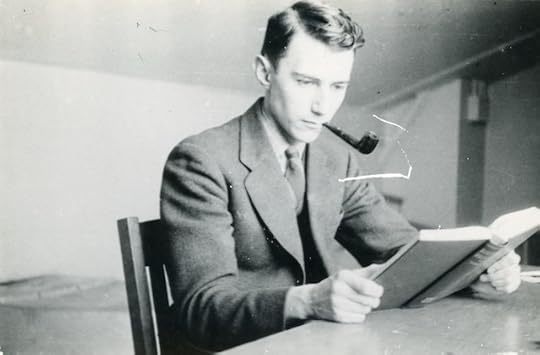The Bit Player Who Changed the World

In 1937, at the precocious age of 21, an MIT graduate student named Claude Shannon had one of the most important scientific epiphanies of the century. To explain it requires some brief background.
Before coming to MIT, Shannon earned two bachelors degrees at the University of Michigan: one in mathematics and one in electrical engineering. The former degree exposed him to Boolean Algebra, a somewhat obscure branch of philosophy, developed in the mid-nineteenth century by a self-taught English mathematician named George Boole. This new algebra took propositional logic, a fuzzy-edged field of rhetorical inquiry that dated back to the Stoic logicians of the 3rd century BC, and cast it into clean equations that could be mechanically-optimized using the tools of modern mathematics.
Shannon’s degree in electrical engineering, by contrast, exposed him to the design of electrical circuits — an endeavor that in the 1930s still required a healthy dollop of intuition and art. Given a specification for a circuit, the engineer would tinker until he got something that worked. (Thomas Edison, for example, was particularly gifted at this type of intuitive electrical construction.)
In 1937, in the brain of this 21-year-old, these two ideas came together.
Boolean logic, Shannon realized, could be used to transform the art of designing electrical circuits into something more formal. Instead of starting from a qualitative description of a what a circuit needed to accomplish, and then tinkering until you came up with a workable solution, you could instead capture the goal as a logic equation, and then apply algebraic rules to improve it, before finally translating your abstract symbols back into concrete wires and resistors.
This insight was more than just a parlor trick. As Jimmy Soni and Rob Goodman note in their fantastic 2017 biography, A Mind at Play: How Claude Shannon Invented the Information Age, “circuit design was, for the first time, a science.” As Soni and Goodman elaborate, Shannon had done more than just simplify the job of wire-soldering engineers. He had also introduced a breakthrough idea: that metal and electron circuits could implement arbitrary logic. As Walter Isaacson summarized in The Innovators, “[this became] the basic concept underlying all digital computers.”
Shannon published these leaps in his master’s thesis, which he gave an unassuming title, “A Symbolic Analysis of Relay and Switching Circuits.” Nearly seventy years later, as I was writing my own masters thesis at MIT, Shannon’s shadow still loomed large.
I’m recounting this story for two reasons. First, I’m a fan of Shannon, and think he doesn’t get enough credit. His contributions arguably dwarf those of his contemporary, Alan Turing, who Shannon later briefly met when their wartime cryptanalysis efforts overlapped.
Second, and more specifically, I bring him up because a brand new documentary about Shannon, called The Bit Player, was just released on Amazon Prime. It’s directed by Mark Levinson, whose work I admire, and is based in part on the book by Soni and Goodman that I also admire. Needless to say, I’m excited to watch it, and thought many of you might be as well.


Cal Newport's Blog
- Cal Newport's profile
- 9944 followers



